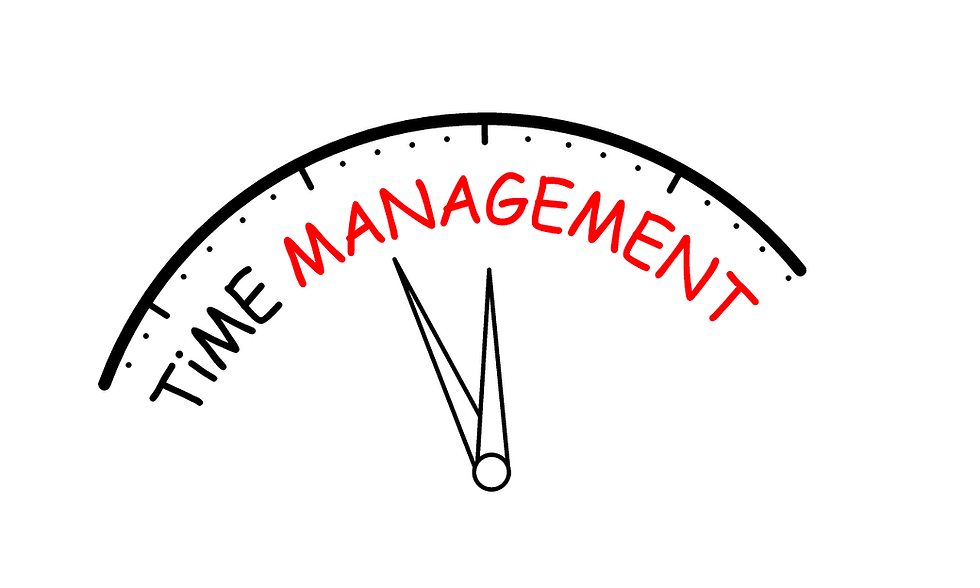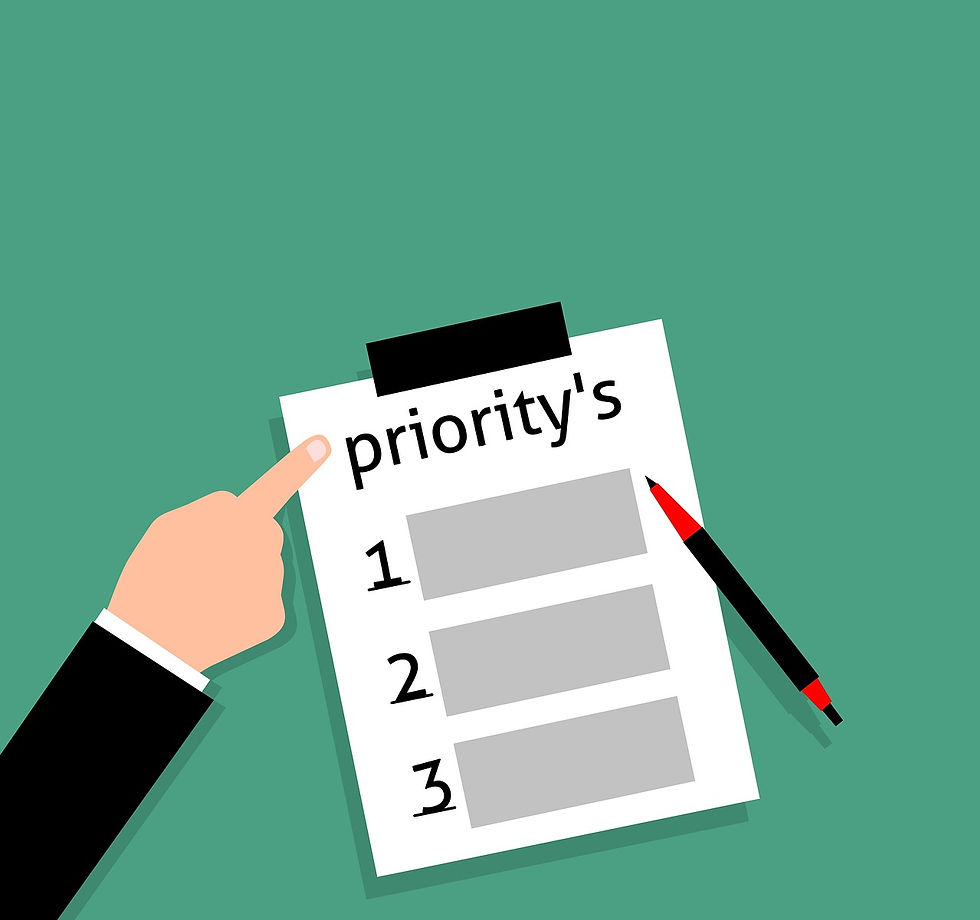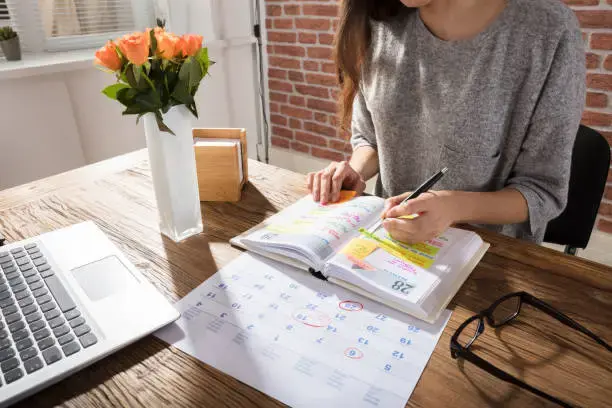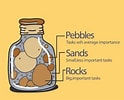
Time management techniques are a set of rules or principles you need to follow in order to be more productive and efficient with your time, make better and faster decisions as well as accomplish more in less time and with less effort. This week we are covering some of the best tips and techniques out there for time management to allow you to make the decision for what makes sense for you and allow you to begin trying some techniques today to help yourself.
Strategies, Skills, Tips and Tricks
· Know how you spend your time- use a time log for a 2-week timeframe recording how you spend your time in 15-minute increments. Then review the results asking yourself:
1. Did everything you needed to do get done?
2. Which tasks require the most time?
3. What time of day are you the most productive?
4. Where is most of your time devoted (job, family, personal, recreation?)
These 4 questions will assist you with many other strategies, for example with being able to prioritize and be more realistic in planning.
· Time vs. task focus—Think of your day in terms of time, not the tasks you have to do. Devote time to important tasks every day, you can reliably schedule regular intervals of time and get into a routine. It takes 30 days to create a habit, but good habits make your life easier. With good habits in place you don’t have to make as many hard decisions, thus you are less likely to make unproductive ones such as talking yourself out of doing what you had planned.

· Set Priorities- a well-known strategy, using the Eisenhower Matrix, is to characterize each task into 4 quadrants as either urgent or non-urgent, as well as if it is important or not important. The quadrants allow you to see and compare the tasks in a graph form for simplicity.
| Urgent | Not Urgent |
Important | Do these as soon as possible. | Defer these until all urgent and important have been addressed. |
Not Important | Delegate these to someone else if you can, or set aside a little time to attend to these items. | Think about deleting these tasks- they are likely time wasters. |
This helps you to determine and appropriately distribute your time, as well as gain greater control over the number of important tasks that become urgent.
Another easy way to prioritize is to create a ‘to do list’. You can organize this list according to daily, weekly, or monthly and you are able to rank the items with a system that makes sense to you (ie. High, medium or low priority, or following the urgent-non urgent and important- not important form above). You are then able to mark off items as you accomplish them aiming for high priority or urgent and important items first!
· Goal Setting- develop SMART goals to allocate your time efficiently. SMART goals are Specific, Measurable, Achievable, Relevant and Time-based. Be sure to set goals for both long term / larger achievements and the short term / small milestones needed to achieve the larger goal.

· Set Reminders- stay on top of micro tasks that will eventually achieve your goals with periodic reminders in your email, phone, etc.
· Set Deadlines- this instills a sense of urgency and helps you to concentrate on completing a specific task in a certain timeframe.
· Avoid multi-tasking- Studies have shown that multi-tasking actually makes us lose time as we are switching from one task to another. It may also lead to difficulty in concentrating and maintaining focus. Do your best to focus on one task at a time. Some suggestions- keep your surroundings clean, turn off notifications on your smartphone, dedicate time for specific tasks.
· Use a planning tool- These include planners, calendars (digital calendars: Google Calendar, Outlook Calendar, Fantastical, Calendly), phone apps (Time Trackers, Time Savers, Task Managers, Habit Developers), wall charts, index cards, pocket diaries, notebooks. Refer to your tool daily and update it as needed.

· Get organized- research has shown that clutter negatively impacts our sense of well-being. I suggest going through your things and make a donation pile, a keep pile and a trash pile.
Another suggestion is to use a system when processing and sorting information- i.e. in your email. Use the folders, tabs, flags, etc. to help you to work through your list more efficiently. This can also be applied to your regular mail, bills, banking or anything that has numerous categories or parts. Find a system that works for you and stick with it.
· Delegate / Get help from others- Identify tasks that others can do and assign them to someone that has the needed skills, interest, and experience to accomplish the task. This frees up your time for tasks that require your expertise.
Another way to get help is to ‘buy time’ by obtaining goods or services that save time. This is accomplished by paying someone to mow your lawn, clean your house or by joining the carpool for your children’s extracurricular activities. If this is possible for you, it frees your time for other important or urgent activities.
· Schedule appropriately- Effective scheduling requires you to know yourself. Keeping in mind when you are the most productive and alert, schedule your day blocking time for high priority tasks; but be sure to also leave time for small tasks, running errands, relaxing, reading, etc. It is recommended to only schedule ¾ of your day allowing time for creative activities like planning, dreaming and thinking. Avoid scheduling nonproductive activities like playing games or scrolling through social media.
Commitment—if you can’t commit to devoting time to a task, don’t put it in your schedule. Only schedule tasks you WILL do. Be brutally realistic, not idealistic when making your schedule.
· Manage time-wasters- Try to reduce your time spent on known time-wasters with some of these simple tips:
1. For handheld devices- take advantage of voice-to-text feature to take notes, simplify texts and even draft emails as you are on the go. Take any actions needed immediately following a call to not be distracted by it in the future. Impose screen time limits on yourself and schedule breaks from the device completely.
2. Email- schedule a specific time to view and respond to emails. Turn off notifications for emails. Immediately delete junk emails. Try to handle each email only once if possible. Kee your address book up to date and your account organized.
3. Family obligations- Use and sync virtual calendars for easy sharing between family members, make each family member responsible for consulting the master calendar for potential conflicts before committing to something. Create a central area or an agreed upon app for posting communications like appointments, announcements and messages.

· The Pickle jar theory- You have a jar filled with: Rocks- your significant tasks, Pebbles- important tasks that should be completed but can be put off and Sand-the tasks that disturb you during the day like emails, social media and phone calls.
Think of your tasks for the day, categorize them, then make a to do list giving appropriate time for each rock (up to 8 hours). Then fill in some pebbles and sand if the time allows for the day. It is a visual metaphor to illustrate the fact that a person’s day can be filled with many small and unimportant things that take away space / time from the important things. It helps you to stay focused and take control of your day.
· Use apps to block out distractions-
1. Forest is an app that helps you stay focused and off your phone. The company partners with an organization called Trees for the Future to plant trees when you spend virtual coins earned in Forest.
2. StayFocused is a browser extension that prevents you from using time-wasting websites like Reddit, Twitter, Wikipedia, Instagram, and more. It’s highly configurable, so you can customize it to your specific distractions.
3. Freedom is a tool that can block both websites and apps on all of your devices, simultaneously. Take advantage of their free trial to know if it’s right for you.
· Stop procrastinating- We all put off unpleasant or difficult tasks. I suggest to just decide that you are going to ‘get it off of your plate’ and schedule it first thing in the morning to get it out of the way.

· Give yourself a reward- After you have accomplished a task, give yourself a reward. Then you will be motivated to complete the next unpleasant task as it comes along.
· Stay healthy- The care and attention you give yourself is importing. Building in time to relax and do enjoyable activities will help you to rejuvenate physically and mentally which in turn will help you to accomplish more tasks with ease and speed. Set boundaries to remain healthy, use blue- light filters and grayscale mode to improve your digital well-being and be sure to monitor your screen time.
Learn to say ‘No’- don’t agree to more than you can handle as it increases stress and decreases your productivity and efficiency.
Consistently including time for yourself in your schedule helps to keep your mental health and your life in balance. It can also be helpful to have things to look forward to when going through stressful periods.
Poor time management and too much screen time can result in fatigue, more frequent illness and moodiness. To reduce stress- reward yourself for successes and accomplishments- even if they are small ones.
Creating your own time management strategy

1. Establish goals and priorities. Think of your long- and short-term goals for your career and personal development. Make sure the goals are SMART: specific, measurable, attainable, relevant, and timely. What will it take to achieve them? How can you manage your time to maximize your productivity?
Once you have established your goals, prioritize them in order of importance. It may be helpful to use Post-its or pen and paper to better visualize your priorities.
2. Choose the best method for you. Decide upon a method or two to implement. Based on what has worked for you in the past, you can mix and match different time management skills from the list in Part 3.
3. Plan and implement. Apply your chosen method over a period of time. A month is typically enough time to evaluate whether a strategy is working. Take notes on how you feel after one or two weeks. Was one method more effective than the other?
Create your schedule, set your goals and write to-do lists to achieve those goals. Remember to schedule down time and to give your self rewards!
4. Reassess. After one month of your new time management methods, it’s time to reassess. What’s working? What’s not working? Continuously adjust your strategy and plan to be more efficient and effective. Continue to practice these habits each month, adapting them as your priorities change.
Hopefully you saw a few different tips and strategies that interest you and you have a plan to create and begin your own strategy. Join me for the last part of this series, which directly relates to time management in the workplace; for improving your working / professional side!
Resources:
Next time:

Stay tuned for my next blog in 2 weeks for Time Management Part 4: Top 12 Workplace Time Management Techniques and Tools.
Related Post Links:
Author: Jen Hassaj | 11-1-23



Comments